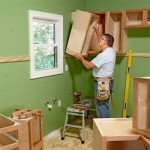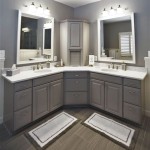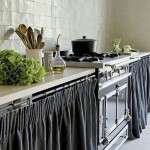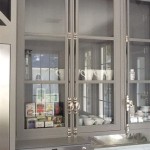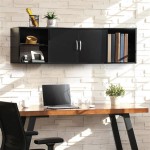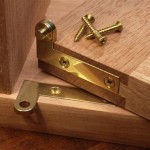The Perfect Dining Room Corner Cabinets For Maximizing Space and Style
Dining room corner cabinets represent a versatile and often overlooked element in interior design. They offer a practical solution for storage while simultaneously enhancing the aesthetic appeal of a dining space. The selection of a corner cabinet depends on various factors, including the dimensions of the room, the existing décor, the intended storage purpose, and budget considerations. Understanding the different types, materials, styles, and design considerations is crucial for making an informed decision that complements the dining room and fulfills its functional requirements.
In smaller dining rooms, corner cabinets are particularly advantageous. They utilize otherwise underutilized space, providing valuable storage without encroaching significantly on the room's footprint. In larger dining rooms, corner cabinets can serve as accent pieces, balancing the room's visual weight and contributing to a more cohesive and organized design. Choosing the "perfect" dining room corner cabinet necessitates a careful evaluation of these factors to ensure both functionality and aesthetic harmony.
Understanding Different Types of Corner Cabinets
Corner cabinets are available in a variety of forms, each designed to serve specific purposes and complement different interior styles. Categorizing these cabinets by their basic design allows for a systematic understanding of their respective strengths and weaknesses.
One common type is the freestanding corner cabinet. These are self-contained units that can be easily moved and repositioned within the room. They offer flexibility in terms of placement and are ideal for renters or individuals who prefer to change their interior décor frequently. Freestanding corner cabinets are generally available in a wider range of styles and finishes than built-in options.
Built-in corner cabinets, conversely, are integrated into the wall structure. These offer a more permanent and seamless look, often appearing as an extension of the room itself. Built-in cabinets require professional installation and are better suited for homeowners who are committed to a particular design aesthetic. They maximize storage space and can be customized to fit specific dimensions and storage needs. Customization might include integrating lighting, specialized shelving, or unique door styles.
A third type, the corner hutch, combines a base cabinet with a display cabinet on top. Hutches are excellent for showcasing decorative items, china, or glassware, while simultaneously providing closed storage below. They are particularly well-suited for dining rooms that serve as both dining and entertaining spaces. The glass-fronted upper cabinet allows for the display of cherished items, adding a personal touch to the room.
Consideration must be given to the type of door mechanisms used on these cabinets. Options include hinged doors, sliding doors, and glass-fronted doors. Hinged doors are the most common type and offer full access to the cabinet's interior. Sliding doors are a good choice for tight spaces where swinging doors would be impractical. Glass-fronted doors allow for a display of items while protecting them from dust and damage. The choice of door style influences both the functionality and the aesthetic appeal of the corner cabinet.
Selecting the Right Materials and Styles
The materials used in the construction of a corner cabinet impact its durability, appearance, and overall cost. The selection of material should be aligned with the existing décor of the dining room and the desired level of maintenance.
Wood is a classic and versatile material for corner cabinets. Solid wood cabinets are known for their durability and timeless appeal. Different types of wood, such as oak, maple, cherry, and mahogany, offer varying grain patterns, colors, and levels of hardness. Hardwoods are generally more durable and resistant to scratches and dents than softwoods, but they also tend to be more expensive. Wood provides a warm and inviting aesthetic, making it suitable for traditional and transitional dining room styles.
Manufactured wood products, such as MDF (Medium Density Fiberboard) and plywood, are more affordable alternatives to solid wood. These materials are engineered to be stable and resistant to warping, making them suitable for humid environments. MDF is often used for cabinet doors and panels, as it provides a smooth surface for painting or applying veneers. Plywood is commonly used for cabinet boxes and shelving, offering strength and stability. While manufactured wood products may not have the same inherent beauty as solid wood, they can be finished to mimic the look of real wood at a lower cost.
Metal accents, such as handles, hinges, and decorative trim, can add a touch of sophistication to corner cabinets. Metal hardware is available in a variety of finishes, including brass, chrome, nickel, and black. The choice of metal finish should complement the other hardware and fixtures in the dining room. Glass shelves or glass panels in doors can also add visual interest and create a sense of openness.
Style is a crucial consideration. Traditional corner cabinets often feature ornate details, raised panel doors, and antique finishes. These cabinets are typically made from solid wood and are designed to evoke a sense of elegance and formality. Contemporary corner cabinets, in contrast, tend to have clean lines, minimalist designs, and glossy finishes. They are often made from manufactured wood products and are designed to create a sleek and modern aesthetic. Transitional corner cabinets blend elements of both traditional and contemporary styles, offering a balance between classic and modern design.
Coastal style corner cabinets emphasize natural materials, light colors, and a relaxed, informal aesthetic. These cabinets may feature distressed finishes, woven accents, and nautical-inspired hardware. Farmhouse style corner cabinets incorporate rustic elements, such as reclaimed wood, exposed hardware, and simple, functional designs. The stylistic choice must be congruous with the existing theme of the space.
Key Design Considerations for Optimal Functionality
Beyond aesthetics, the functionality of a corner cabinet is paramount. The interior configuration and dimensions should be tailored to the specific storage needs of the user. Considerations should be given to the type of items to be stored, the frequency of use, and the accessibility of the contents.
Adequate shelving is crucial for maximizing storage capacity. Adjustable shelves allow for customization to accommodate items of different sizes. The depth of the shelves should be sufficient to hold the intended items without wasting space. Consider the weight capacity of the shelves to ensure they can safely support heavy items, such as stacks of plates or large serving dishes. Wire shelves offer good ventilation, which can be useful for storing items that need to breathe, such as linens. Solid shelves provide a more stable surface for storing small items that might fall through wire shelves.
Drawers provide concealed storage for smaller items, such as silverware, napkins, and serving utensils. Drawers should be equipped with smooth-gliding mechanisms for easy access. Full-extension drawers allow for complete access to the contents, while partial-extension drawers provide adequate access while saving space. Consider the depth and width of the drawers to ensure they can accommodate the intended items. Drawer dividers can help to organize the contents and prevent items from shifting during opening and closing.
Lighting can significantly enhance the functionality and aesthetic appeal of a corner cabinet. Interior lighting makes it easier to see the contents, especially in dimly lit dining rooms. LED strip lights are a popular choice for corner cabinets, as they are energy-efficient, long-lasting, and provide even illumination. Puck lights can be used to highlight specific items on display. Exterior lighting, such as a spotlight, can be used to draw attention to the corner cabinet and create a focal point in the room. The decision on whether to install lighting should be based on the amount of ambient light available in the room and the intended use of the cabinet.
Proper ventilation is important for preventing the buildup of moisture and odors inside the cabinet. Ventilation holes or gaps in the back of the cabinet allow for air circulation. This is particularly important for storing items that are prone to mildew or mold, such as linens or china. Consider the placement of the corner cabinet relative to heating and cooling vents to minimize temperature fluctuations and prevent damage to the contents.
Finally, the dimensions of the corner cabinet should be carefully considered to ensure it fits comfortably in the designated space. Measure the available space accurately and allow for adequate clearance around the cabinet for opening doors and accessing the contents. Consider the height of the ceiling to ensure the cabinet does not obstruct any light fixtures or architectural features. The depth of the cabinet should be proportionate to the size of the room to avoid creating a cramped or unbalanced appearance. The chosen cabinet should optimize the utilization of the corner space without overwhelming the room's dimensions.

Banquette Seating At Home With Ashley

Amish Gladstone Solid Wood Corner Hutch

30 Cozy Breakfast Nook Ideas For Every Size Kitchen
:max_bytes(150000):strip_icc()/ThibaultJeanson-c5d8ad4034c248eb98c2fa4671d3b502.jpg?strip=all)
60 Small Kitchen Ideas That Are Big On Style

Chic 60 4 Farmhouse Kitchen Pantry Cabinet Freestanding Storage Hutch With Doors Adjustable Shelves And Drawers Perfect Addition For Dining

19 Small Dining Room Ideas And Decorating Tricks For 2025
60 Incredible Breakfast Nook Ideas And Designs Renoguide N Renovation Inspiration

30 Small Dining Room Ideas To Make The Most Of Your Space

Chic 60 4 Farmhouse Kitchen Pantry Cabinet Freestanding Storage Hutch With Doors Adjustable Shelves And Drawers Perfect Addition For Dining
60 Incredible Breakfast Nook Ideas And Designs Renoguide N Renovation Inspiration
Related Posts

